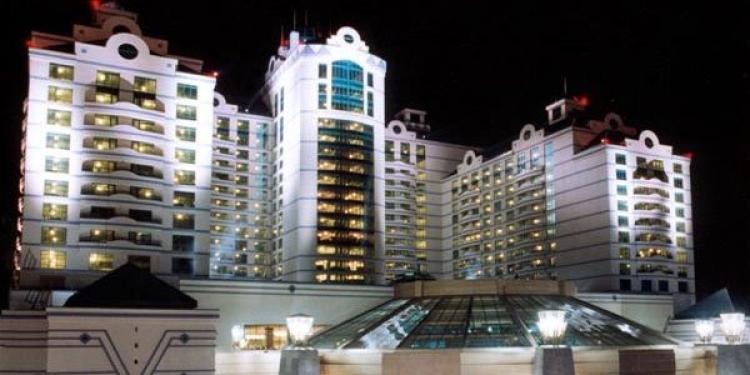Foxwoods Gambles On Non-Gambling Attractions
Posted: November 26, 2014
Updated: June 4, 2017

We take a look at why the largest gambling resort in America is reducing the number of both gaming tables and gambling machines
We are, I’m reliably informed, a competitive species. Our core being is inherently driven to compete with others, to strive to be more than our rivals in whatever sphere there happens to be that allows a comparison, to do better, to be better, to, in essence, try and win. From the days when we huddled in caves all the way through to the glass and steel towers of Wall Street we have today, humans have always competed and reveled in that competition, that has spawned so much progress and prosperity.
Unless, of course, you own a casino in the northeastern corner of the US, of which there are many, and that is in of itself a large part of the issue. The relaxation of US gambling laws over the last 25 years by nearly every state in the region has meant that what was once an easy money spinner still makes a profit but there’s a battle for every dollar. The fierce level of competition has led to some of the largest operators facing tough choices, and some closing up to avoid facing them at all.

The Trump Taj Mahal in Atlantic City is still scheduled to close on December 12th due to ongoing disputes with its main union over benefits for its 3,000 workers, a closure which, if it goes ahead, would bring the number of casinos to close in the municipality to five this year alone, all of them attributable to falling profit margins based on falling visitor numbers. This has left the Broadwalk inhabited by some very large and noticeable monuments to changing economic times.
The effects of the fiscal crisis that saw the sub-prime mortgage business rip a good deal of wealth from the world continue to ripple around the planet effecting local and national economies, international trade and the businesses that have to operate in each and every case. The fiscal squeeze has had an effect on the behavior of individual consumers, state authorities and national government policy, and a lot of the knock-on results can be seen in the casino business across the northeastern United States.
Saturation Of The Market Approaches
So many states jumped on the gambling tax dollar bandwagon during the prosperous years of the late nineties, and indeed the early years of this century, that the sheer number of competing casinos was slowly shrinking the catchment area of all the others. This was fine, so long as the economy continued to feed booming consumer spending, but it didn’t. Profits began to fall and some casinos closed under the pressure, but ironically it was the economic harshness of the times that spurred some states to push forward with more gambling, still chasing that tax dollar.
When Chris Christie stood outside a gleaming new casino in Atlantic City and heralded it as being a symbol of future economic rejuvenation he wasn’t to know it would close just two years later. He, like other governors and state legislators around the region, had bet on gambling to bring in much needed revenue, it’s a gamble he and others appear to have lost, and yet it has done nothing to stop even greater expansion of the number of casinos being planned or built.
- Refurbishment plans reflect new reality
- Market less gambling-centric says CEO
- Foxwoods is the biggest gambling resort in North America
November’s midterm elections saw Massachusetts green-light another three casinos in a marketplace that almost certainly doesn’t need them, but with gamblers going out of state to spend their money what choice does Massachusetts have? Individual states are doing all they can to stabilize their own internal economies, with New Jersey doubling down on gambling each and every time even being one of the first states to allow internet betting in the US.
What hasn’t changed are participation rates. Approximately the same percentage of people gamble now as they did before, however they tend to wager less and less frequently, a sign of the fiscal crisis still with us, and that led at least one gambling center to re-examine how best to make use of its assets and indeed to develop other assets that wouldn’t be more gambling, but complimentary to it. Las Vegas didn’t let the fiscal crisis get it down, it used it to build another facet of itself to cater for this new paradigm.
Have They Been Outfoxed?
Foxwoods, the largest of the casino resorts in the US, is following this example set by Las Vegas as it attempts to pull in custom based not just solely on gambling but on the location itself and other attractions. Something they are far better positioned to do than many other casinos. Their location in Hartford, Connecticut, means that it is ideal for a getaway for those in some of the big east coast metropolises, but that change in consumer mentality and spending means they’ve had to change their approach.

The largest casino in the United States is reducing it’s number of gaming tables and slot machines in an effort to make room for these non-gambling related activities and attractions. This means that when they’re finished there will be 100 tables and 1,000 machines fewer in their various casinos that populate the resort in the southeastern corner of the state. There will instead be nightclubs, restaurants and a mall, places that don’t have gambling at their heart, and making way for these new necessary attractions hasn’t been easy.

CEO Felix Rappaport admitted their reluctance to reduce gaming capacity was probably one based more on emotional attachment than to sound economic judgment, and this explains why some have muttered it might be too little too late, however the industry as a whole is now facing up to this far less gambling-centric market, and Foxwoods for one will be gambling news of the changes they’re making to their casinos will equate to higher visitor numbers, because higher visitor numbers always equals higher gaming revenues, whether people went there to gamble or not.
He expects Foxwoods to begin to move toward a model whereby only 65%-70% of their earnings would be derived from gambling activities on their property. This not being out of choice but necessity what that really means is that they expect a fall in their gambling revenues of some 10 to 15 percent over the next few years and are doing all they can to counteract it’s long term effects. It remains to be seen what a fall of that nature in revenues would do to the rest of the casinos in the northeast. I suspect in due course we’ll find out.











